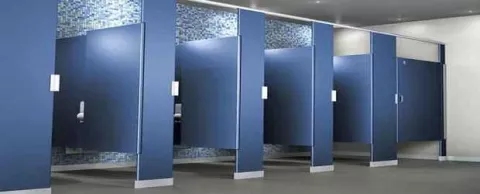
When was the last time you stopped during a road trip and did not cringe at the thought of having to use public toilets? Finding public toilets in India is a challenge in itself, and finding clean ones a near impossibility. When one analyses the reasons, very often it may be seen that the real cause behind unsanitary conditions in these places is a systematic cleaning schedule and proper supervision and monitoring of the quality and regularity of cleaning.
Technologists at the Indian Institute of Technology, Kharagpur (IIT KGP) have now devised a product that can make these functions hassle free and methodical. A research group at the Advanced Technology Development Centre in IIT KGP, comprising Dr Rashmi Mukherjee and Suvodip Chakraborty, under the mentorship of Professor Aurobinda Routray of the Department of Electrical Engineering, has developed a low-cost smart hygiene monitor (SHM), which will act as a smart device to assist the administration in maintaining public or community toilets, clinics, hospitals, operation theatres, kitchens and other public places clean. SHM has been developed using an embedded platform incorporated with sensors connected via the Internet of Things (IoT).
The device can be installed in any room where cleanliness needs to be monitored at regular intervals. Commercial off-the-shelf electronic components, sensors and telecommunication modules have been used for assessing the condition of the concerned room and generating an alert system to indicate the need for cleaning it when the situation demands. The sensors in the SHM are used to detect ammonia, sulphur dioxide, carbon monoxide, carbon dioxide, volatile organic compounds [VOCs] and particulate matter [dust]. All have been assembled simultaneously in an embedded platform.
But at what level of pollution or contamination will the device send a signal? Explained Dr Routray, “The threshold level for each of these sensors have been set as per the levels stipulated in the air quality index [AQI] given by SAFAR-India [System of Air Quality and Weather Forecasting And Research] as conceptualised and defined by the Ministry of Earth Sciences (MoES), Government of India.” Once these threshold levels are exceeded, he added: “an email alert will be sent via cloud to the administrative office indicating the room condition as well as the need to clean it. Simultaneously, an alert will be sent to the concerned cleaning person stating the location of the room that needs to be cleaned.”
The real time levels of each of these pollutants for each room ID will also be available online, thus helping generation of a data analytics report for concerned officials. Light indicators have also been added to the model so that users may know the status of the room. A green would indicate a clean space, while a red light would tell you that it needs to be cleaned.
Interestingly, Dr Routray points out that this device can find use not only in public spaces where levels of hygiene fall below acceptable or desired levels, but also in sophisticated areas like high-end malls or private office complexes where over-cleaning creates its own set of issues. “Often in the metro airports or malls, you will find that cleaners mechanically go on cleaning toilets and other areas at stipulated intervals, even on low footfall days. This not only results in wastage of water and other cleaning resources, but also leads to overuse of cleaning chemicals, which have environmental ramifications,” he explains.



